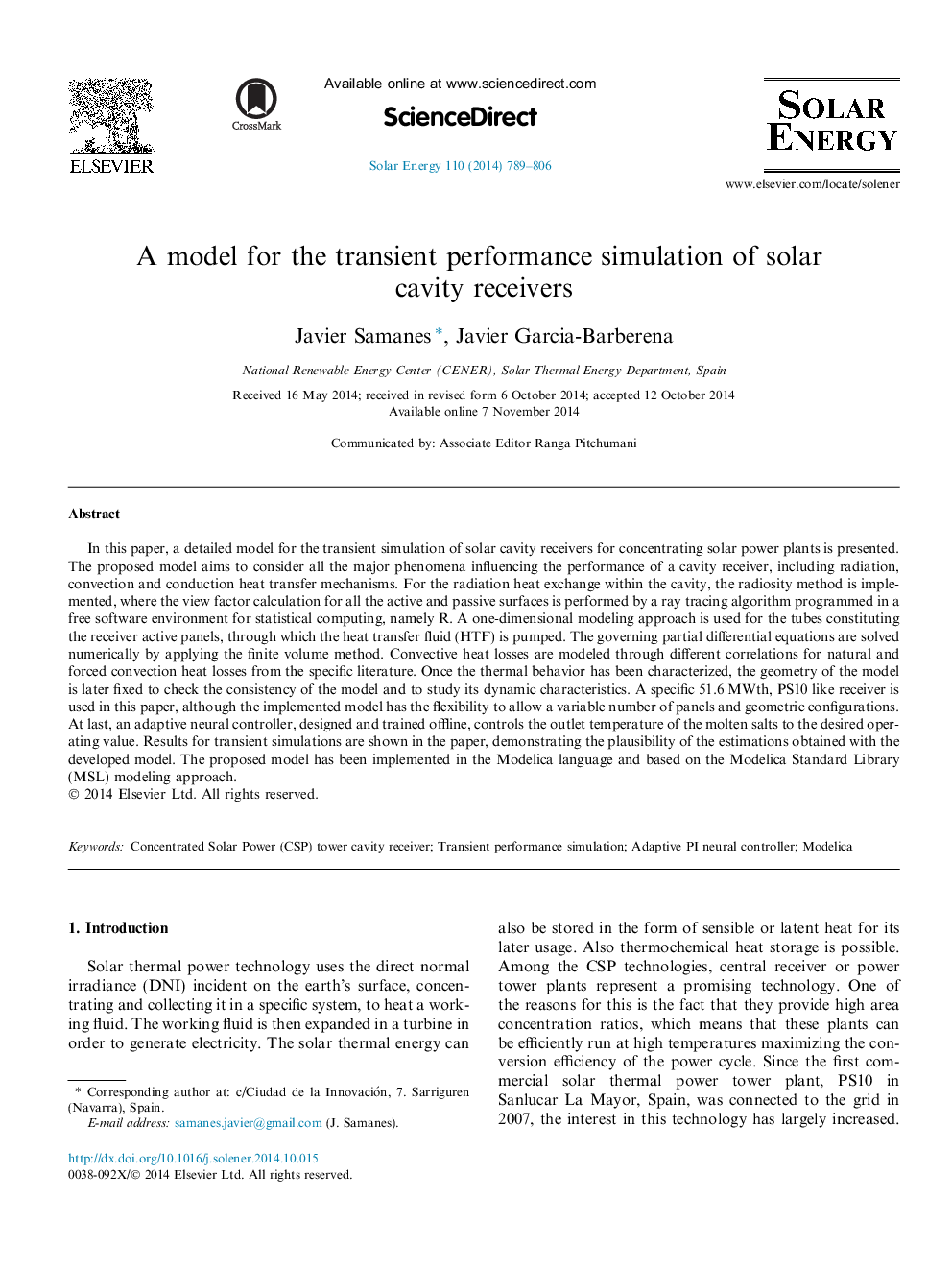| کد مقاله | کد نشریه | سال انتشار | مقاله انگلیسی | نسخه تمام متن |
|---|---|---|---|---|
| 7938260 | 1513108 | 2014 | 18 صفحه PDF | دانلود رایگان |
عنوان انگلیسی مقاله ISI
A model for the transient performance simulation of solar cavity receivers
ترجمه فارسی عنوان
یک مدل برای شبیه سازی عملکرد گذرا از گیرنده های خورشیدی
دانلود مقاله + سفارش ترجمه
دانلود مقاله ISI انگلیسی
رایگان برای ایرانیان
کلمات کلیدی
موضوعات مرتبط
مهندسی و علوم پایه
مهندسی انرژی
انرژی های تجدید پذیر، توسعه پایدار و محیط زیست
چکیده انگلیسی
In this paper, a detailed model for the transient simulation of solar cavity receivers for concentrating solar power plants is presented. The proposed model aims to consider all the major phenomena influencing the performance of a cavity receiver, including radiation, convection and conduction heat transfer mechanisms. For the radiation heat exchange within the cavity, the radiosity method is implemented, where the view factor calculation for all the active and passive surfaces is performed by a ray tracing algorithm programmed in a free software environment for statistical computing, namely R. A one-dimensional modeling approach is used for the tubes constituting the receiver active panels, through which the heat transfer fluid (HTF) is pumped. The governing partial differential equations are solved numerically by applying the finite volume method. Convective heat losses are modeled through different correlations for natural and forced convection heat losses from the specific literature. Once the thermal behavior has been characterized, the geometry of the model is later fixed to check the consistency of the model and to study its dynamic characteristics. A specific 51.6Â MWth, PS10 like receiver is used in this paper, although the implemented model has the flexibility to allow a variable number of panels and geometric configurations. At last, an adaptive neural controller, designed and trained offline, controls the outlet temperature of the molten salts to the desired operating value. Results for transient simulations are shown in the paper, demonstrating the plausibility of the estimations obtained with the developed model. The proposed model has been implemented in the Modelica language and based on the Modelica Standard Library (MSL) modeling approach.
ناشر
Database: Elsevier - ScienceDirect (ساینس دایرکت)
Journal: Solar Energy - Volume 110, December 2014, Pages 789-806
Journal: Solar Energy - Volume 110, December 2014, Pages 789-806
نویسندگان
Javier Samanes, Javier Garcia-Barberena,
